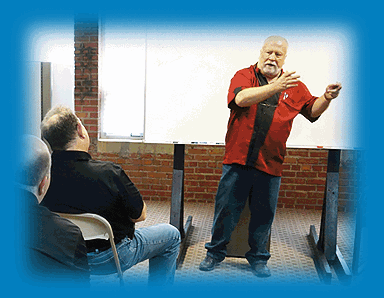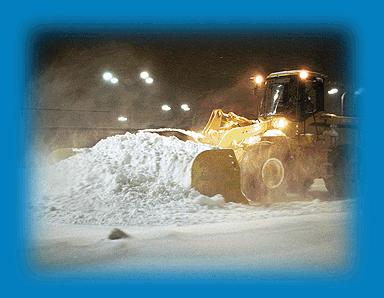









© 2023 Ice & Snow Technologies, Inc. Phone: (509) 525-3197





Snow and Ice Control Consultant
Snow Removal Equipment Expert Trainer
Snow and Ice Contractor Equipment Maintenance Consultant

Whether you are purchasing a deicer chemical, lawn mower, truck, plow, or cutting edges for a plow the purchase
price is always front and center. However, the cost associated with that item must be determined. As I have
stated many times, purchase price is the first step in determining actual cost of use or ownership. Also, as I have
stated many times, the best product for you is the one that fits your needs at the lowest cost of use, and not the
lowest purchase price. To determine the lowest cost of use, or bests buy, one must adopt a process of including
up front other things such as predictable maintenance costs, life expectancy or how long will it last before it
wears out to get to the correct number for decision making. Life cycle bidding or best buy calculation will not
only provide you with the product that best meets your needs at the lowest total cost, but also provide you the
“low bid” number based on actual cost of use or life expectancy, not just purchase price and that is in my opinion
is the real low bid and meets the real intent of the low bid process. Putting this process to work for your
organization will put dollars in your pocket.
When making purchases, the consumer should always be looking for the product that meets their needs at the
lowest total cost of ownership and use. The educated buyer will take steps to truly determine the ‘best buy’ base
on a low total cost of use and not just the purchase price. Interestingly, best buy math reveals the lowest cost of
use (low bid) presenting the opportunity for saving purchasing dollars or/or adding profitability. Rather than
focus strictly on purchase price to determine low bid, today's leading procurement specialists focus on total cost
of use and actual value to determine the best product to purchase. Low purchase price alone is almost always not
the lowest cost of use when life expectancy, residual value (not present on all products) and other factors for the
product are considered. In this article, we’ll explore the differences between initial purchase price and total cost
of use and briefly explain some of the factors that distinguish purchase price and total cost of use describing
variables that should be used for procurement decisions.
The variables to be described hereinafter and others based on the product being purchased, must be reviewed by
the purchaser to determine the real low cost of ownership or low bid for the item(s) to be purchased. This
determination is often mandated by municipal, state, and/or federal purchasing, but are equally pertinent for any
private sector purchasing decision. The variables and calculations are used to compare purchase price to total
cost involve life cycle, life expectancy or wear factor, service and maintenance costs, etc. Wear factor can be a
rating of life cycle that indicates, for example, a snow plow blade’s ability to extend wear life and greatly reduce
blade changes.
Purchase price is simply the amount of money paid to a supplier to acquire a product or service and is not an
indicator of the product with the lowest cost of use or the best buy or as some call it, low bid. It is the first step in
determining the product with the lowest cost of use of use.
Actual total cost of use can be difficult to ascertain during the initial purchase. Total costs can only be accurately
determined at the end of a product’s life when all costs in addition to purchase price have been incurred. Total
costs at the end of a product’s life will account for initial purchase price, maintenance, replacements, life
expectancy due to wear, service and downtime, etc. These factors typically are not evident at the time of initial
purchase.
To compare products at the time of initial purchase one must have an idea of what associated costs will need to be
accounted for while comparing alternative products. One major variable is how long a product will last and at
what repair or maintenance costs. Longer wear life with guaranteed reduced maintenance costs or quality of the
product will lower cost of use, and that is the bottom line number that either takes money out of the budget or
puts money into it. Thus, buyers should rely on demonstrated wear life, dependability factors, company history,
warranty and other items to determine the true best buy option. Product life expectancy and residual value if any
can be known through experience, manufacture recommendations, testimony of use by piers and data to name a
few. Other times buyers must rely on warranties or guarantees from suppliers establishing wear life or product
performance history. In this manner, buyers can compare products based on objective information that
establishes determinable costs for the life of a product. A more expensive initial purchase may be cheaper in the
long run if it lasts longer, requires less maintenance, reduces labor, and/or needs fewer replacements. Especially
if the life expectancy or time to replacement is guaranteed with something more than words. The process of life-
cycle costs bidding and/or purchasing is no more complicated than the following examples.
Liquid deicer “A” at 25% concentration is available for $0.25 per unit while liquid deicer “B” at 30% concentration
of the same deicer chemical is available for $0.27 per unit. Purchase price alone dictates that product “A” be
purchased. However, if we divide the purchase price by the concentration (performance indicator) the math
results in $0.01 per concentration point for product “A” and $0.009 per concentration point for product “B”. Now
this is not only the lowest cost of use, but the low bid factor to be considered for the purchase. Bear in mind that
this single step process is based on purchase price alone and does consider additional reload time and other
factors associated with product “A” with lowest purchase price but the highest cost of use by far.
Another example is cutting edges. Simple low bid based on purchase price alone requires purchasing the least
expensive system that meets minimum requirements, for $1,000 a blade system compared to product “B” for
$1,800.00 a blade system. Now obviously “A” has a much lower purchase price and unfortunately too often that is
where the purchasing process stops. However, assume for example that “A” would require replacement three (3)
times during the season. The total cost for “A” not including the additional costs associated with purchasing,
storing, installing (downtime) the cutting-edge systems, would exceed $3,000 ($1,000 x 3). Alternative “B” in this
example sells for $1,800 a blade system but will last the entire season and comes with a guarantee. Alternative B’s
cost of use is $1,800/season with no additional costs to be added, while Alternative A’s cost is in excess
$3,000/season. Best buy math’ would direct one to buy product “B”. The product with a total cost of use more
than 40% less than product “A” with the lowest purchase price. Life cycle bidding or best buy math is critical to
purchasing the product that truly meets your needs at the lowest cost of use. In this example, more than $1,200
($3,000 - $1,800) over the course of one season is saved per system. Only with the use of best buy math can one
truly determine the important low bid or lowest cost of use number to justify the initial purchase price of $1,800
versus $1,000 and supports the decision that alternative “B” is the low cost (i.e. low bid) alternative. In this
example, the cost of use per season for “A” is $1000.00 plus, while the cost per season of “B” is $600.00.
While seeking lower prices is part of the equation, it shouldn't be done without considering the factors that make
costs go up. A total-cost focus assesses expenses that a purchase price-only focus ignores. Total cost includes all
expenses associated with the acquisition, receipt, storage, use, life cycle, wear factor, maintenance, and downtime
of a product. Improving business performance means increasing revenues and/or reducing costs. As illustrated,
cost reductions can and are realized when products are purchased based on lowest cost of use and not the lowest
purchase price. To characterize and highlight the above exemplary scenarios, low purchase price presented the
most expensive option and all too often does.
Prices are Displayed…Costs are Determined
by Dale Keep, Leading Snow and Ice Industry Consultant